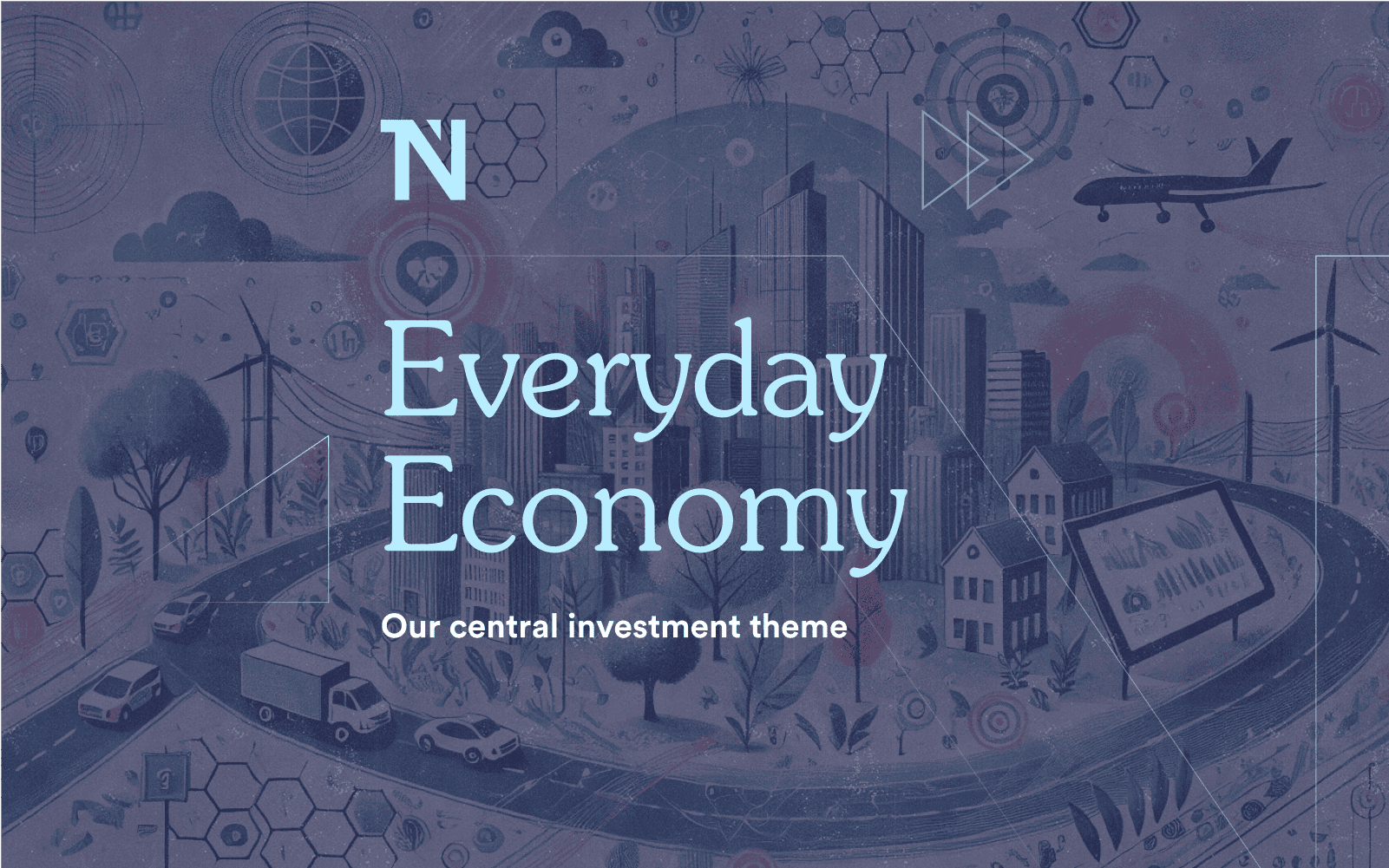


The NextView Ventures Manifesto
Despite rumors that the VC business slows down in the summer, we’ve had one or our busiest periods in quite a while. During June, July, and August, we’ve closed 4 new investments and several follow-ons, with a number of companies gearing up to go out in the fall. Although we had a busy summer, I was fortunate enough to take a bit of time off as well, and to step back for a moment and reflect on Nextview’s strategy and market position going forward.
It occurred to me that although we mentioned our new thematic approach when we raised our last fund in 2017, we haven’t really shared a broader manifesto about how we are approaching the early stage market. It’s been an interesting several years in the early stage venture eco-system, and the sands have shifted considerably. Amidst the rise of new funds, new technologies, and potentially disruptive late stage players, I thought it was important to share what we consider to be our core operating principles here at NextView.
This isn’t a strict play-by-play of the nuts-and-bolts of our investment model (which you can find on our website). Instead, it’s more of a Manifesto about the core beliefs that shape our strategy. Most of these rhyme with what we’ve said in the past, but some have also evolved to fit the changing landscape and our own convictions about what really matters for founders and their investors at the seed stage.
Belief #1: The best time to invest is early. And by early, we mean pre-traction
As the venture capital industry has evolved, more and more seed investors are passing on traditionally “seed stage” startups because there isn’t enough traction. We are also seeing more investors try to be a part of syndicated A rounds for companies that are raising $5M or more and are really not what most would consider “seed” stage.
This is not what Nextview is about. We are first and foremost pre-traction investors. It’s where we believe our expertise can be most helpful to a young company, and it’s what we love to do. However, our overall goal is to invest in the full spectrum of seed. Of the last 15 investments we’ve made, 8 have been pre-product or pre-seed style rounds. The rest have been companies with some early market validation.
In two cases, these businesses were doing significant early revenue ($500K/month+), so could be considered “post-seed”, although both of these companies had not raised significant institutional capital before we led their rounds. If you’re interested, you can read more about our thoughts on pre-seeds.
Belief #2: Capital is plentiful. Lead investors are few. Leads that are true force-multipliers are exceedingly rare.
Although seed funding has exploded since we started Nextview, we continue to hear the refrain from founders that there are tons of investors that will pile-in on a round that is coming together, but that lead investors are few and far between.
Of the last 15 investments we’ve made, we’ve been the lead or co-lead investor over 80% of the time.
Because the best early stage investments are often very non-obvious, we tend to go into an investment assuming that we may be the only institutional investor in the round and don’t get particularly worked up on who else is interested and whether others have passed. That said, we tend to be very flexible on syndication to bring on great partners, and have collaborated with terrific partners like our most frequent co-investors Founder Collective, Accomplice, LHV, Softech, and others.
As seed funds have raised larger and larger funds, more have developed the muscle around issuing term sheets and “leading”. The question then becomes whether these lead investors remain impactful after the deal closes or shifts into a mode of monitoring progress and hunting for the next deal.
We believe that great lead investors should be a force multiplier for companies at the earliest stages. No investor can make a company successful, but there is a big compounding effect if an investor can steepen the trajectory of a company in the first 12-18 months.
This is why we actually have one of the lowest # of investments/partner among all institutional seed funds, and have invested in developing a platform of resources to support founders around team building, product, customers acquisition, and capital planning. For example, in the case of one recent company that we’ve been working with for the last 7 months, we have sourced half of the new team members for the company, including their CTO, head of marketing, head of customer success, and a talented senior engineer.
According to First Round’s State of Startups 3 out of 4 early-stage founders (series A or earlier) say hiring is their #1 concern, but the same amount say they spend less than 20% of their time on it. We try to alleviate some of this stress through our various talent initiatives and our own time and effort.
Belief #3: Outlier Companies Can Be Built Anywhere
We believe that no one geography has a monopoly on businesses with unicorn potential.
We see innovation becoming more broadly distributed over time, and outlier companies being built in more and more places. Old assumptions about geography are increasingly being challenged – with huge consumer wins emerging in Boston (CarGurus, Wayfair, Simplisafe, Pillpack), great B2B companies emerging in NY (Flatiron Health, Mongo, Datadog, etc), and unicorns emerging in smaller tech markets and overseas.
Because of this, we are a multi-geography firm, and will invest in all the core innovation centers in North America. We have offices in New York and Boston, are quite active in the SF Bay area and see significant activity from the diaspora to and from these human capital centers. But we are open minded about where great companies can be built as the access to talent, knowledge, and capital becomes more efficiently distributed across the country. Indeed, this trend is happening across the world, but for now, we are primarily focused on North America.
Belief #4: The Best Way to Spot Outliers is to be Thematic
Great returns in early stage investing is driven by great deal flow and good picking. As the venture market has become more efficient, the best returns come from situations where one is able to spot an outlier that is non-obvious.
As Peter Thiel has said, the key is to be non-consensus-right. In our view, although it’s possible to occasionally get lucky, the best way to find yourself in the position to be non-consensus-right repeatedly is to be thematic in your investing. You need to be immersed in the areas that you think are most exciting, deepen your networks within those areas, and be committed enough to your themes to be able to pick companies or founders that see things that others miss.
Our view is that we are in an unprecedented period where consumer preferences are creating an overhaul in the areas where people spend the majority of the time and money. Because of this, we invest in the “Everyday Economy” which is broadly comprised of two areas. The first is the shift in the way mass market consumers are changing their purchase decisions in the largest categories of household spending, areas like housing, food, child care, apparel, and others.
The other side of the Everyday Economy is the $1T+ spent by businesses that support these consumer categories, but are largely unseen or invisible to most consumers. These are areas like supply chain and logistics, construction, and labor markets. This may be an area that is even more interesting in the coming 20 years, as digital natives are increasingly entering the executive decision-making ranks of historically sleepy and non-tech savvy industries, and breakthrough technologies will cause these markets to leapfrog more traditional IT categories.
Belief #5: Be Principled, but not Dogmatic
Finally, although we try to be deeply principled in our approach, we think it’s also important to be non-dogmatic. Because venture is an outlier business and because opportunity is created in the moments of greatest change, being too constrained by rules or dogma prevents investors from being nimble enough to keep pace with the market.
In fact, some very successful funds broke into the market precisely by taking advantage of out-of-date, dogmatic thinking among the majority of their competitors. Although we always aspire to be authentic, direct, and to follow-through on our promises to founders and our investors, we think it’s critical to build in some exceptions to our model when appropriate.
Being non-dogmatic won’t always mean we make the right moves, but it at least keeps us questioning our assumptions and listening to founders and the market for the way things are changing and how we ought to change or evolve ourselves.
What’s Different? What’s the same?
If you’ve followed us for some time, much of this manifesto will seem familiar, although some elements show an evolution in thinking. For example, while being a lead investor was always part of the strategy, we led a smaller proportion of our rounds early on than we do now.
When we started the firm, we were also more narrowly focused geographically due to our smaller team and network. We also invested in more traditional IT and software categories much like other VC’s, and had not developed more of a market and consumer-driven POV on the future.
Finally, we found that most of our mistakes in the past can be traced to overly-dogmatic thinking. We prided ourselves as having a clear and coherent strategy from day one, but would have probably made a few better decisions if we had more flexibility to chase exciting opportunities that were outside of our typical strike zone.
Despite these shifts, the core principles of our approach and the ethos of our firm has remained the same. We also continue to be guided by the same North Star – which is to offer a great product for our customers, the entrepreneur, so that he or she can achieve the full-potential of their creations.
As we look forward, we hope that this approach resonates with the market and that we can live up to the standards and ambitions of the terrific founders that we get to work with every day. If you are interested in learning more about us, follow our medium publication here.
If you are working on something that will bring about extraordinary change in the Everyday Economy, please reach out to us!
This was originally posted on robgo.org





